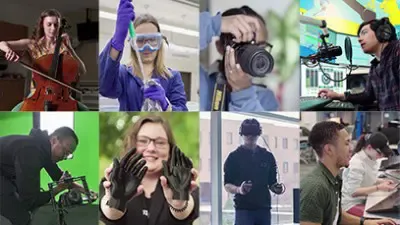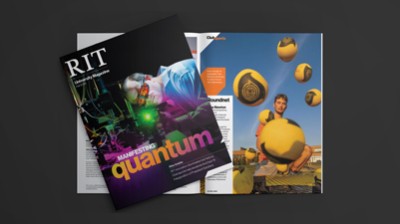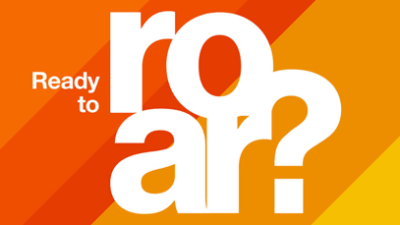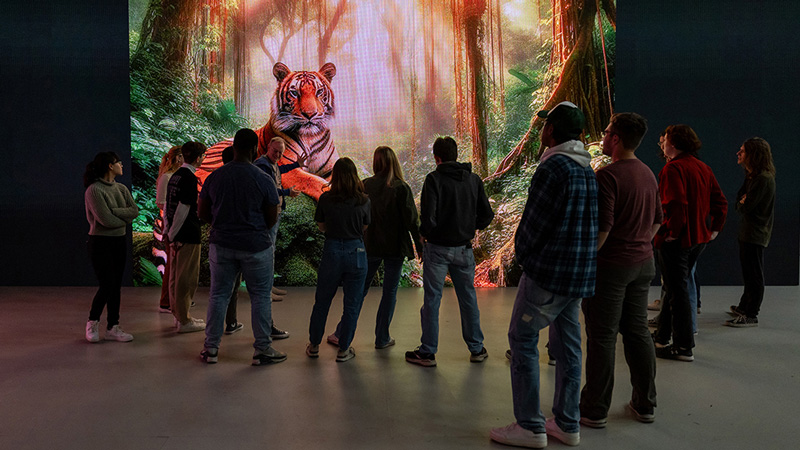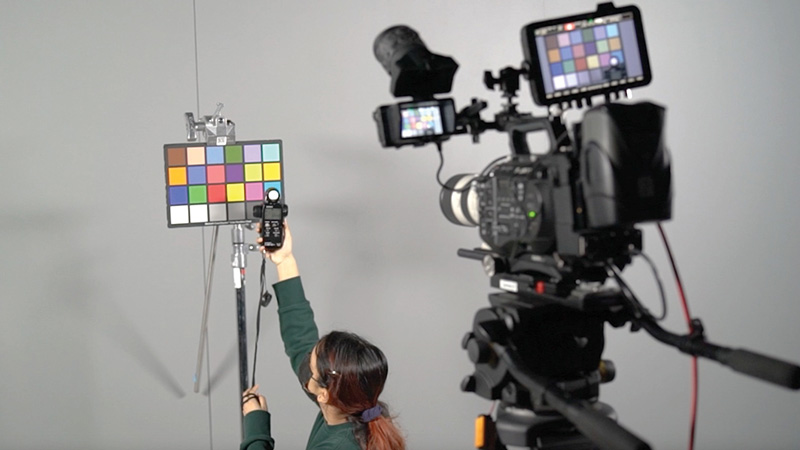Motion Picture Science Bachelor of Science Degree

Motion Picture Science
Bachelor of Science Degree
- RIT /
- Rochester Institute of Technology /
- Academics /
- Motion Picture Science BS
Motion picture science combines imaging science and engineering with the arts to inspire innovation in feature film, television, and animation production.
77K
Total Square Feet of Facility Space
Overview for Motion Picture Science BS
Why Study Motion Picture Science at RIT
World-Class Facilities: Students have access to MAGIC Spell Studios, a facility with industry-standard color correction, sound mixing suites, and much more.
Industry Experience: Spend a semester in Los Angeles with RIT in LA, where you can intern at top studios and entertainment companies.
Jobs at Industry Leading Companies: Recent graduates have established distinguished careers at major visual effects companies, post-production studios, and media technology companies including Apple, DreamWorks, HBO, Marvel Entertainment, and Netflix.
Hands-on with Dolby technology: RIT’s partnership with the Dolby Creator Lab gives students access to professional tools, training, and career pathways.
STEM-OPT Visa Eligible: The STEM Optional Practical Training (OPT) program allows full-time, on-campus international students on an F-1 student visa to stay and work in the U.S. for up to three years after graduation.
What’s the last great movie or TV show you saw that made a lasting impression on you? The most ingenious minds behind the most captivating shows and movies apply their knowledge of science and engineering, and use their passion for storytelling to make film, television, and animation possible.
Motion Picture Science
RIT’s BS in motion picture science provides a science and engineering-based education in the fundamental imaging technologies used for the motion picture industry. By combining a core curriculum in filmmaking, production, and digital cinema from the College of Art and Design and course work from the Imaging Science major in the College of Science, the motion picture science degree prepares students in the art and science of feature film, television, and animation production. Topics include:
- Film and digital image capture
- Film scanning
- Digital image manipulation
- Color science
- Visual effects
- Digital and traditional projection
New facilities provide students with hands-on experience with the same equipment being used in major motion picture production today.
Utilizing research, critical thinking, creativity, and a range of problem-solving principles, students are taught to address complex motion imaging workflow issues within the constraints of time, space, budget, and technology.
Industry Connections
Students are active in making industry connections through:
- Attendance at large national conferences, including the National Association of Broadcaster’s annual trade show and the Society of Motion Picture and Television Engineer’s Annual Technical Conference & Exhibition.
- Professional student organizations: RIT’s School of Film and Animation maintains memberships in a number of professional organizations: Animation World Network, College Art Association, Rochester Association for Film Arts & Sciences, Society of Motion Picture and Television Engineers, University Film and Video Association, Siggraph, and BEA.
- A network of alumni who develop digital cinema technology, manage feature film and television post-production, design imaging equipment, and conduct research and development that continues the advancement of motion imaging technology.
- Recognition at SMPTE’s annual conference for their innovations and contributions to cinema technology
Hands-On Experience
Study Filmmaking in LA
RIT in LA gives film and animation majors the opportunity to spend a semester in Los Angeles learning from industry professionals. The bulk of your time will be spent at internships, but you'll also complete two courses that will complement your study-away experience. Learn more about RIT in LA and how you can gain industry experience in traditional filmmaking, animation, or cutting-edge areas like virtual production in Los Angeles, the epicenter of the global entertainment universe.
Furthering Your Education in Motion Picture Science
Combined Accelerated Bachelor's/Master's Degree
Today’s careers require advanced degrees grounded in real-world experience. RIT’s Combined Accelerated Bachelor’s/Master’s Degrees enable you to earn both a bachelor’s and a master’s degree in as little as five years of study, all while gaining the valuable hands-on experience that comes from co-ops, internships, research, study abroad, and more.
+1 MBA: Students who enroll in a qualifying undergraduate degree have the opportunity to add an MBA to their bachelor’s degree after their first year of study, depending on their program. Learn how the +1 MBA can accelerate your learning and position you for success.
-
Join Us for Accepted Student Open House
Visit campus on March 28 or April 11 to meet faculty, tour campus, and ask your questions.
-
Apply for Fall 2026
First-year students can apply for Early Decision II by Jan. 1 to get an admissions and financial aid assessment by mid-January.
Careers and Experiential Learning
Typical Job Titles
| Applied Vision Science Engineer | Color Scientist | Compositor |
| Data Wrangler | Digital Imaging Technologist | Imaging Engineer |
| Imaging Scientist | Post-Production Engineer | Software Engineer |
| Special Effects Technologist | Sound Designer | Sound Engineer |
| Technical Cinematographer | Vault Assistant | Video Editor |
| Production/Operations |
Industries
-
Government (Local, State, Federal)
-
Internet and Software
-
Movies, TV, and Music
-
Defense
Cooperative Education and Internships
What’s different about an RIT education? It’s the career experience you gain by completing cooperative education and internships with top companies in every single industry. You’ll earn more than a degree. You’ll gain real-world career experience that sets you apart. It’s exposure–early and often–to a variety of professional work environments, career paths, and industries.
Co-ops and internships take your knowledge and turn it into know-how. An art and design co-op provides hands-on experience that enables you to apply your artistic capabilities in dynamic professional settings while you make valuable connections between classwork and real-world applications.
Cooperative education, internships, and other experiential learning opportunities are encouraged for students in the BS in motion picture science.
Featured Work and Profiles
-
Building a Virtual Production Curriculum
Supported by MegaGrant from Epic Games, MAGIC Spell Studios has brought groundbreaking research and filmmaking techniques to RIT.
Read More about Building a Virtual Production Curriculum -
The Future of Filmmaking
RIT Motion Picture Science students drive engineering through their artistry, and expand their creativity through engineering. This unique program utilizes research, critical thinking,...
Read More about The Future of Filmmaking -
Tell Compelling Stories in the School of Film and Animation
RIT School of Film and Animation students are exposed to cutting-edge technology, unmatched faculty and facilities, and a supportive community.
Read More about Tell Compelling Stories in the School of Film and Animation -
Motion Picture Science Program's Professional Touch Has Student Prepared for Industry
As Gayle McAdams ventures into the job market, she has a distinct advantage: RIT’s Motion Picture Science program has simulated a professional atmosphere.
Read More about Motion Picture Science Program's Professional Touch Has Student Prepared for Industry -
School of Film and Animation Overview
RIT's School of Film and Animation is a creative community that allows students to explore their talents in the art of filmmaking or the science and technologies used in the motion picture industry....
Read More about School of Film and Animation Overview -
Class of 2021 Reflections
College of Art and Design Class of 2021 graduates share their favorite RIT memories and offer inspirational words for their peers.
Read More about Class of 2021 Reflections
Curriculum for 2025-2026 for Motion Picture Science BS
Current Students: See Curriculum Requirements
Admissions and Financial Aid
This program is STEM designated when studying on campus and full time.
First-Year Admission
First-year applicants are expected to demonstrate a strong academic background that includes:
- 4 years of English
- 3 years of social studies and/or history
- 4 years of mathematics is required and must include algebra, geometry, algebra 2/trigonometry, and pre-calculus. Calculus is preferred.
- 2-3 years of science is required and must include chemistry or physics; both are recommended.
Transfer Admission
Transfer applicants should meet these minimum degree-specific requirements:
- Pre-calculus is required. Calculus is preferred.
- Chemistry or physics is required and both are recommended.
Financial Aid and Scholarships
100% of all incoming first-year and transfer students receive aid.
RIT’s personalized and comprehensive financial aid program includes scholarships, grants, loans, and campus employment programs. When all these are put to work, your actual cost may be much lower than the published estimated cost of attendance.
Learn more about financial aid and scholarships
Accreditation
Related News
-
October 30, 2025

‘TheWrap’ recognizes RIT as one of the nation’s top film schools
Forward-thinking faculty; curriculum that fuses technology, the arts, and design; and a legacy of priming students with a maker mentality helped RIT’s School of Film and Animation maintain its place on TheWrap’s list of Top 50 Film Schools of 2025.
-
September 24, 2025
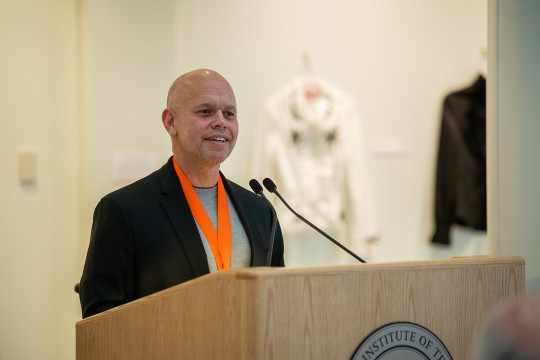
New School of Film and Animation director, faculty roles for 2025-26
Ricky Figueora taking over as the new director of RIT's School of Film and Animation headlines exciting promotions and additions to the College of Art and Design faculty.
-
July 30, 2025

‘The Hollywood Reporter’ names RIT as a top film school in the U.S. for second year
Accomplished alumni, creative technology research, and interdisciplinary program offerings set RIT’s School of Film and Animation apart from others on The Hollywood Reporter’s 2025 top film schools list. RIT was ranked number 22 this year, a leap ahead from the school’s rank in 2024.
Contact
- Ricardo Figueroa
- School Director
- School of Film and Animation
- College of Art and Design
- 585‑475‑2745
- rrfppr@rit.edu
School of Film and Animation
